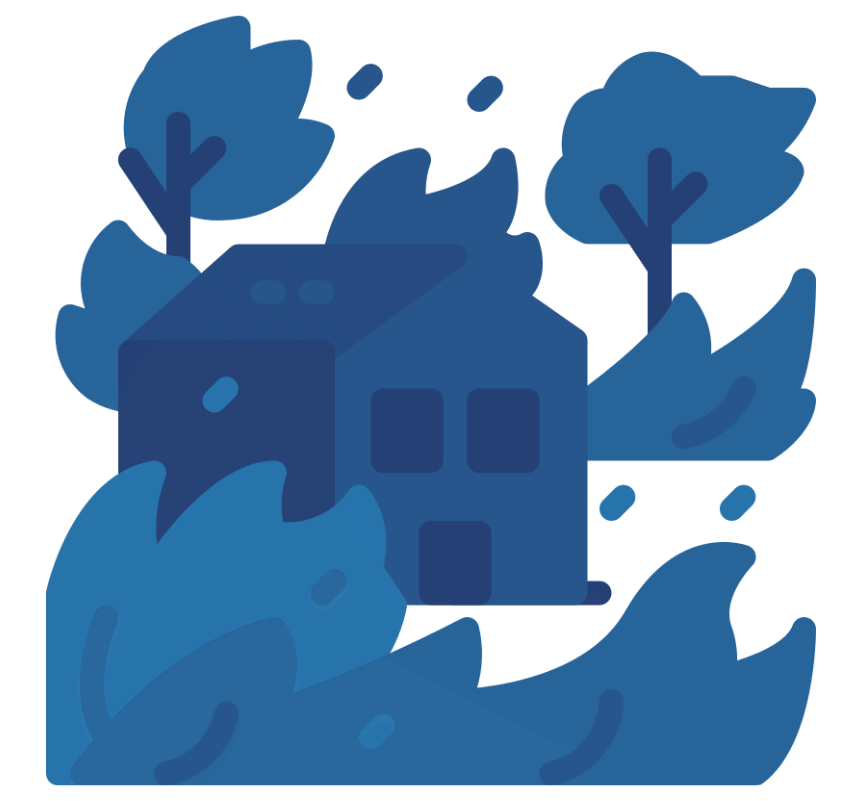UNITED STATES
Wildfire Risk USA
From Precisely
Wildfire Risk is a scientific and up-to-date wildfire hazard and risk assessment data set for the United States.

Data Overview
The model is based on Fire Behaviour analysis and accounts for physical, climatic, and man-made variables including fuel type (vegetation), fire intensity, ember impacts, burn probability, suppression factors, mitigation factors and high wind event areas as well as, insect impacts and community level attributes.
The net result is a set of uniquely generated FireShed polygons covering the United States with corresponding risk scores.
There are three distinct fire environments covered by the model
- Wildland
- Intermix and
- Interface.
Each of these areas has unique characteristics of structure density and fire behaviour, and therefore evaluated separately to increase the models accuracy.
All information is included at the address level using a unique identifier with additional proximity measurements to uncover further insight around structure specific risk.
Use cases
- Assess wildfire risk exposure using a model that uniquely addresses the varying characteristics of each landscape
- Maximise your bottom line by avoiding high risk areas while identifying pockets of opportunity in generally risky areas
- Understand wildfire risk at the property level rather than a macro region and price business accordingly
- Measure a property’s proximity to high and very high wildfire zones.
- Visualise wildfire risk sheds for all 50 states
Cloud Region Availability
US West (Oregon)
Canada (Central)
US East (N. Virginia)
US East (Ohio)
US East (Commercial Gov - N. Virginia)
US Gov East 1 (Fedramp High Plus)
US Gov West 1
US Gov West 1 (DoD)
US Gov West 1 (Fedramp High Plus)
Asia Pacific (Jakarta)
Asia Pacific (Mumbai)
Asia Pacific (Osaka)
Asia Pacific (Seoul)
Asia Pacific (Singapore)
Asia Pacific (Sydney)
Asia Pacific (Tokyo)
EU (Frankfurt)
EU (Ireland)
EU (London)
EU (Stockholm)
EU (Zurich)
EU (Paris)
South America (São Paulo)
Canada Central (Toronto)
Central US (Iowa)
East US 2 (Virginia)
South Central US (Texas)
US Gov Virginia
US Gov Virginia (FedRAMP) High Plus
West US 2 (Washington)
Australia East (New South Wales)
Central India (Pune)
Japan East (Tokyo, Saitama)
Southeast Asia (Singapore)
UAE North (Dubai)
North Europe (Ireland)
Switzerland North (Zurich)
UK South (London)
West Europe (Netherlands)
US Central 1 (Iowa)
US East 4 (N. Virginia)
Europe West 2 (London)
Europe West 4 (Netherlands)
Category
Geospatial
Refreshes
Quarterly
Access
Paid (Trial available)
Geographic Coverage
United States (by N/A)

